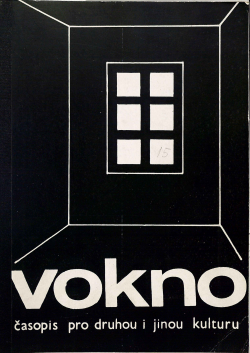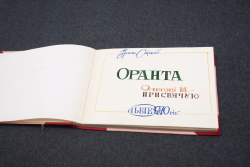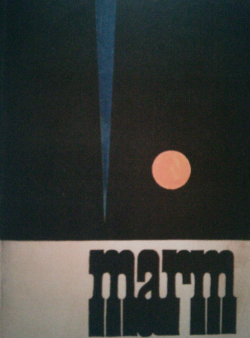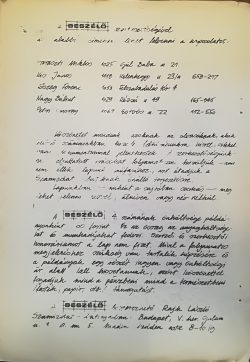Competencies:
Through the content and activities of the course, students will
Knowledge
- understand the different types of samizdat
- understand the diversity of civil resistance, local contexts and periods;
- understand the connection between civil resistance and communist ideology;
- get to know different strategies of the civil resistance towards communist ideology
- understand why was it important to act against censorship in different periods and countries
Attitudes
- be open to a complex analysis of civil opposition and the strategies of the regime about censorship;
- consider the basics of ideas of civil resistance against censorship;
- esteem examples of samizdat,
- esteem examples of civil resistance
Skills
- identify the bases of the civil resistance
- understand the concept and types of samizdat
- understand the relationship between the regime’s power and samizdat
- recognize the main phases of the period 1945-1989 and their relation to samizdats
- understand the specific operation of samizdat
- recognize the complex and associated characteristics of resistance and opportunism
- they are well acquainted with the history of their own country
by Károly Kiss
Civil Courage: Samizdat as the means and form of civil resistance in the era of socialism
Time and space, definition
The present curriculum deals with the samizdat publications and their impact in the area of the Socialist bloc (the Soviet Union and the Central and Eastern European countries) and in the era of the 1950s-1980s. By the term samizdat, we understand political and literary-artistic works, published by avoiding censorship, irrespective of the government and despite police harassment. The term was introduced by the Russian poet Nicholas Glazkov, who created the concept of samizdat by linking the Russian words: self-publishing.
The communication goal of the single-party state: achieving the total rule over the ideological-cultural unity and the media.
In that era around the countries of the region the superiority of the party state was clearly characteristics in almost all segments of human life: so in the intellectual section. From Poland to the GDR and Hungary to Bulgaria, new, foreign cultural works and ideas could only be accessed through controlled channels. The party-state television and radio, state-run press and publishing, as well as censorship have all resulted in self-censorship, a language use and dependent communication situation, which was in line with state ideology. The official communication channels provided soft or hard propaganda aimed at the given target group. Leading editors were appointed by the state party, thus keeping complete control over the cultural and spiritual life of the area. These processes are specified in another curriculum of ours describing the operation of censorship and self-censorship.[1]
[1] First task: collect information among family, acquaintances, parents, grandparents about what they were watching, reading, listening to, what cultural events they visited in the era. If you do the task in class or as an extracurricular activity, study the cultural network which determined the lives of these generations.
The creators of the samizdat and the dimensions of the choice of freedom
The publishers of samizdat were people who have decided to give an opportunity to transmit democratic political values and intellectual achievements as well as alternative cultural patterns beyond the spiritual space controlled by the party-state. They considered the right to free thinking and debate important. Samizdat[1] as an intellectual product was created by the decision of the people who, contrary to the system believed that the question of when and how they were FREE was an essential value for them. This decision may have evolved following a historical/political event (the revolution in Berlin, the defeat of the Hungarian uprising in 1956, the invasion of Prague in 1968, the student movements of ’68, the solidarity movements of the 80’s, etc.), as a reaction to a long and unceasing suppression (Ceausescu’s system in Romania, the Honecker era in the GDR, or the Kádár era in Hungary), or it may also have arisen as a result of the individual’s intellectual maturity or his studies or even his private conversations. Thus the person living in dictatorship formed the belief that these values are more important than living a peaceful life.[2]
Samizdat makes it possible to express different opinions from the power, as well as to express the writers’’ professed values, thus creating alternative, critical political cultures. Writing in a samizdat meant the attractive potential of autonomous intellectual creation and it has become a kind of prestige in its own narrow cultural environment (subculture) and it may also have strengthened the feeling of togetherness. Its impact on intellectual subculture is more significant than in the general culture of the given country. Representatives of the power were therefore dealing with it surpassingly, since it gave the opportunity for the development of the opposition political culture, which was non-existent until then. Furthermore, it was the opportunity for a self-conscious organization of citizens that is the opportunity to switch to a civil courage act. Samizdat criticizes existing states, breaking the communication practice of the party state trying to dominate everything, it creates the so called second publicity thus going beyond the life of private conversations and the feeling of discomfort.
The relationship of the party state to samizdat
The reaction of the party state to the samizdat phenomenon is multiple and differs in time and space.
During Stalinism and the following decade, the power persecuted the establishers and creators of the samizdat actively and with serious retaliation in the whole region. In the 70’s and 80’s acts against the oppositional ideas gradually became more moderate, and the oppositional manifestations could appear in more and more ways in everyday life. Since the socialist countries propagated a peaceful coexistence policy with the capitalist world, they took a more cautious policy instead of brutal repression against oppositional actions as well. They did not want to risk the Western’s favourable judgement of the system thus for example in Hungary, in the second half of the 80s, massive bloody police violence was not typical (while in the 70s this could happen at any time in the countries of the region). As Bálint Nagy, one of the samizdat creators wrote: ‘That was the defence of publicity, they did not take on this big hoo-ha.’ However, it can also be stated that the scope, audience and significance of the samizdat in the region differed greatly. The effect depended on the degree of repression of the given country as well as on the attitude against those who were thinking differently and on the impact of the samizdat since for instance in Hungary, the highest circulated samizdat newspaper, BESZÉLŐ (Speaker) was published in 2000 copies, while in Poland The Solidarity was issued in 500000 copies. At the same time GDR, Czechoslovakia and Romania used hard-line communist repression until the last moment of the existence of the party-state system.
What kind of retaliations were generally used by party states against the samizdat creators?
Creators of samizdat were observed, there were serial perquisitions and police harassment. (e.g.: Operational teams of 10 to 12 people were bothering their daily lives day and night, bugged their homes, telephones and undercover agents, who pretended to be their friends, made reports of them.) It was a more subtle form of intimidation to bring police checks to lawsuit (including libel, incitement, provoked fights, dangerous skulking, etc.) rather than to political level, as they could bring a suit against the observed person as a common criminal. (e.g.: Gábor Demszky was sentenced to 6 month in prison, suspended for 3 years in this way.) Making the individual’s walk of life impossible was also a means to supple the opposition: those who wrote or made samizdat could lose their job in the whole era at any time, or they might even have been regularly collected and taken to the police for a short period, they could not get passports, their rights were limited by administrative means and they could also have been ordered to a mandatory medical treatment.
The party state identified samizdat as a danger, since formulating a political opinion independent of the party and thus creating a party-independent political culture meant creating political alternatives in the long term. That is the reason why they dealt with the issues, which affected a narrow circle of intellectuals at the highest level. After a while the power, since they could not suppress the oppositional actions, aimed at dividing and limiting the opposition and the second publicity. Therefore they also offered the opportunity of making a bargain with the power: those who did not write in foreign publications or in samizdat, had bigger chance of publishing their writings. This divisive – as they used it in that period ‘salami’-technique allowed them to achieve self-censorship without open censorship. Self-censorship meant the internalisation of taboos (topics and subjects prohibited by the party). The interconnection of the power and intellectual elite could be realized this way, keeping up the appearances that intellectual discourse and pluralism exist in the primary publicity.
This was the process the samizdat circles were fighting against in every country where the goal was to quit self-censorship and conformity-based intellectual way of life. The second publicity has to be created to be able to find the factors that can lead to opposition. At the same time they also had to become aware that this would stay a narrow movement because their works did not get to the masses and only the deteriorating financial situation and the decline in living standards would move the wider political morale towards a new alternative.
The technical background of the samizdat
Besides the creators, in order to publish the samizdat the creation of the technical infrastructure was also required. It covered the entire process of preparation, creation, and distribution despite the fact that the party state attempted to hinder or make the creation difficult.
In terms of its form, samizdat could be a newspaper multiplied by handwriting as well as a publication created with carbon paper, typewriter and mimeograph or it could even be printed in a printing-house.[1]
[1]Find an example of each form in the database from the material of your own country and the region’s countries. Prepare a prezi and make an exhibition in the class from the collected materials.
Vasyl Stus: The Merry Cemetery
Above handwriting, initially it was multiplied with typewriter and indigo. The power wanted to identify the creators and thus keep control of this procedure by collecting writing patterns from typewriters. Later mimeographs helped to duplicate the publications. They quickened the production process as the basic text was prepared with a typewriter and with the help of the mimeograph it was easy to copy with ink by rotating a drum.
Screen-printing was another typical technique, for which the ramka technique had to be acquired. They had to learn how to use primitive tools (picture frame, screen-printing nylon, screen-printing ink, ink-slice, stencil papers, nailer, etc.) in the cellars and attics of secluded country houses. The product was therefore of poor quality, but due to its content, even the texts which were difficult to read could be sold. This technique was spread from Poland to Hungary. The stencil and offset machines, paper and ink, smuggled from the West, were all very precious.
In the 80s, it also occurred that the power wanted to reveal the size of a group, so they wanted to stitch them up with false gifts. Many times the producers accepted these tools (e.g.: alleged stolen paper, ink, which actually originated from the political police) but then they quickly disconnected the giver and used the tools.[1]
[1] előállítás technológiai gyűjtéshez keretet ad a Courage gyűjtemény általános anyaga országonként
Conspiracy (to secretly organise the steps of the action) was needed to produce, write, store and distribute samizdat. They could fail at any point of the process and they had to be aware of the fact that the power would use retaliations. Therefore, the tasks were divided between groups and individuals and they tried to avoid the control of the power.
The creation of samizdat was often preceded by a free university lecture or a free conversation of intellectuals. The ideas which came into existence here were later put down on paper by opposition parties. These groups were already observed, and reports about the activities were made by built-in agents. This process can be viewed starting from the COURAGE database via the webpage of Mozgó Világ in a documented way with pictures: https://mozgovilagfmc.tumblr.com/
Initially the authors wrote the texts anonymously, under pseudonyms or with ciphers, since those who were employed could expect retaliations. Later in some countries, for example in Hungary, from 1978, texts have appeared with the real name.
After the production, distribution could also be difficult, it had to be solved in a conspiratorial way as well. The distribution was done in so called samizdat boutiques: they usually were in an apartment, but they could also be obtained in a workplace, library or university. Being caught led to search, during which in the presence of official witnesses with all formality, they confiscated manuscripts, texts and books. These were registered page by page so that the police or the secret police could not write anything in them or add compromising parts to them later. The distribution was also anonymous, the name of customers were put down with the initials or under a pseudonym by the spreaders, and since the publications were in demand among intellectuals, it was possible to make a living by it modestly. However, a serious search meant financial loss for producers and distributors as well.[1]
[1] Thus it was possible to transform the political act into a common law press offence.
The subject characteristics of samizdat publications
The genre of samizdat texts ranged from a few pages of dissertations through expurgated political, sociological and philosophical studies to the whole novels and analyses. In the literature about 16 categories have been set up from news to pornography. Examining the contents published in samizdat, there are three major themes: 1) the ones dissecting Marxist themes 2) the ones about liberal, human rights and finally 3) texts featuring patriotic and nationalist content. By the end of the era, the latter became more important and often their content was linked in connection with national and human rights issues.
Political contents, political events considered by the authorities as taboo were typical e.g. the opinions of 1956 in Hungary, the Charta77, Solidarity, etc. The topic of religion, poverty, social exclusion, national issues, and the situation of minorities, political alternatives and ideas of thinking differently also appeared. The formation of opposition solidarity and community was also discussed and it has become increasingly embarrassing for the power therefore for instance in Hungary in 1984 the Central Committee of the MSZMP decided to limit the public activity of ‘small but strong political opposition’. The actions against the samizdat circle were monitored by 8 people from the Central Committee, which indicates the importance of the problem for the power. In response to these processes, samizdat literature monitored the future of the Soviet Union and the other socialist countries, as well as the interrelationship of justice and state protection, and it criticized leading politicians. There was considerable debate about censorship and self-censorship, the positive attitude of the intellectual to conformism, and the criticism of the divisive attempts of the power.
Samizdat task I.
Time of the activity: if it appears as an extracurricular task, it could be one week or as many weeks as the number of students who would like to try out the game, depending on the activity of the participants.
Game rules: Can be played only in school time, only members of the group can know about it with the leadership of the teacher. No violent act is allowed and you have to be honest with each other. If you are caught, you have to put it down when and how it happened!
Imagine being dissatisfied with something (write some terms on cards e.g.: freedom of the press, freedom of opinion, repression, lack of democracy, freedom of religion, one-party system, etc.)
You would like everyone to get acquainted with the problem on your card. Draw it up in three sentences and whisper it in the person’s ear standing next to you. They should pass it on. At the end of the round the last person tells what they have heard and you also tell the others what you said originally. The game proves that verbalism distorts information in connection with the problems.
After that draw another card and think it over how you could pass your exact idea on to everybody.
The teacher is the power, they have got the right to check the backpacks, desks and coats unexpectedly twice during the week of the game. If they find something on a student, they are out of the game.
- write it down as many times as you are involved in the game (you have one week for that, but you can only work on it in the school and it is the other students’ task to check you, if you are caught, you lose.
- try to rope in other students for multiplying, but if the teacher gets to know about what you are multiplying, it means that somebody gave you away and you lost the game. The more students you can get involved, the more points you will get. (at the end discuss what the optimal number of creators could be)
- If somebody perceives a conversation on the topic, you lose the game. Check whether a conspiratorial talk can be evolved about the topic.
- at the end of the week try to spread your ideas through the school. If you are caught on spreading leaflets, you lose the game.
- Study how many students lost during the term/month/week and whether somebody learnt from the mistakes of the others as well as what techniques you applied during production and distribution.
After the discussion have a look at the database of COUAGE and find connections between the game and reality.
Samizdat task II.
Framework for elaboration: extracurricular work
Procession: Create groups of three in the extracurricular activity. Everyone should choose a decade (the exact framework is selected by the teacher because it can vary from country to country in this region.)
The groups should prepare a SWOT analysis (strengths, weaknesses, possibilities and dangers) of samizdat creation: why it is worth launching, what the risks are, who they can count on, what threatens the creators, etc. After completing the swot analysis, make a presentation and present the given period to each other and the decision whether you would make a samizdat and if so how you would make it!
Samizdat task III.
During your extracurricular work find at least three samizdat and three people from the given period using the database of the Registry. Make a presentation from the research material, and using these data examine what the common features of the different periods were, and what impacts were characteristics of all decades based on historical facts.
[1] Keressetek az adatbázisban minden egyes formára példát országotok és a térség országainak anyagából! Készítsetek prezit, kiállítást az osztályban a kigyűjtött anyagokból.
[2] előállítás technológiai gyűjtéshez keretet ad a Courage gyűjtemény általános anyaga országonként
[3] Így lehetett köztörvényes sajtóvétséggé alakítani a politikai cselekedetet.
[1] Első feladat: végezz gyűjtést családi, ismeretségi körben szüleidnél, nagyszüleidnél, hogy mit néztek, olvastak, hallgattak, milyen kulturális eseményeket látogattak a korszakban. Ha iskolai osztályban, szakkörben végzitek, akkor nézzétek meg közösen azt a kulturális hálót, ami ezen generációk életét meghatározta.
1] http://cultural-opposition.eu/courage/individual/n12768 on the link above we can find the description of the exhibition which presents he topic thoroughly, as well as the publication made from the exhibition material, http://cultural-opposition.eu/courage/individual/n175 the collection of the Croatian archives in connection with samizdat, http://cultural-opposition.eu/courage/individual/n12378 the material of the Czech Vokno samizdat, http://cultural-opposition.eu/courage/individual/n3976 the availability of the Czech and Polish samizdat. Searching for other samizdat is possible through the web site.
2] Find examples of the reasons for making this decision from the life of the creators and writers of samizdat of your own country. eg.: Gábor Klaniczay private collection http://cultural-opposition.eu/courage/individual/n42006, http://cultural-opposition.eu/courage/individual/n27190,
Games





